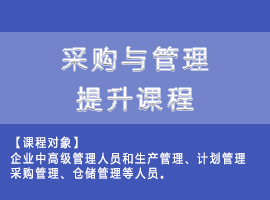《人力资源战略的规划与实施》
《人力资源战略的规划与实施》详细内容
《人力资源战略的规划与实施》
Four Dimensions of Human resource Strategy
人力资源战略的规划与实施
(12课时,12 hours)
课程综述
本课程是清华大学MBA总裁班的品牌课程,用一句话描述本课程,是“人力资源的战略地图”。
Recommendation
This is a brand course of Tsinghua EMBA. To summarize this course in one sentence, is “the blueprint of human resource strategy”.
课程导言
人力资源战略有四个维度,即效率、人才、组织、文化。卓越的人力资源战略,是借助这四个维度上张力,为企业构建核心优势(见下图)。
企业的硬实力,来自效率战略,它是强大执行力的基础。企业的人才优势,来自人才战略,它让企业人才济济、英雄辈出。企业的系统优势,来自组织战略,它让各部门协调一致、配合顺畅。企业的软实力,来自文化战略,它让企业形象积极正面、深入人心。本课程围绕人力资源战略的四个维度,阐述人力资源战略的规划和实施步骤。
Overview
There are four dimensions of human resource strategy, namely, efficiency, staffing, organization, and culture. An outstanding HR strategy, is a combination of those four sub strategies (as shown in the diagram above).
A company's hard power is based on executive power, which comes from the company's efficiency strategy. A company's personnel advantages come from the company's staffing strategy. A company’s system advantage comes from the organizational strategy, which makes all departments coordinate and cooperate smoothly. The company's soft power comes from the company's cultural strategy, which can build the company's positive image, and can root the image deeply in people's minds.
Aligning with the four dimensions of HR strategy, this course introduces the planning and implementing of HR strategy.
课程收益
系统知识:学习该课程,学员能全面了解人力资源战略的组成部分,以及各部分之间的相互作用。
关键技能:学习该课程,学员能迅速掌握人力资源战略的规划过程,以及战略实施要点。
Benefits
Systematic knowledge: In this course, you will see the big picture of human resource strategy.
Critical skills: In this course, you will develop new skills for planning and implementing human resource strategy.
课程特色
案例教学:以丰富的案例,讲述人力资源战略的四个维度,让学员迅速掌握人力资源战略的结构和步骤。
情景演练:以精心的演练,让学员结合工作场景,演练战略规划实施技能,让学员达到知行合一。
Features
Perceptible: By case study, this course provides a stereoscopic profile of the human resource strategy.
Practical: By scenario exercise, this course shapes skills of HR strategy planning and implementing.
内容目录
第一章 战略概述:人力资源的战略意义(1课时)
第二章 效率战略:构建强大的效率优势(2课时)第三章 人才战略:构建持久的人才优势(3课时)
第四章 组织战略:构建全面的系统优势(1.5课时)
第五章 文化战略:构建深远的文化优势(1.5课时)
第六章 战略实施:人力资源的战略实施(3课时)
Contents
Chapter 1 Overview, understanding human resource strategy (1 hour)
Chapter 2 Efficiency, building hard power of execution (2 hours)
Chapter 3 Staffing, building lasting personnel advantages (3 hours)
Chapter 4 Organization, building overall system advantages (1.5 hours)
Chapter 5 Culture, building universal soft power of culture (1.5 hours)
Chapter 6 Implementation, steps of human resource strategy (3 hours)
课程进度
第一天 上午 9:00—12:00
第一章 战略概述:人力资源的战略意义
第二章 效率战略:构建强大的效率优势
第一天 下午 13:30—16:30
第三章 人才战略:构建持久的人才优势
第二天 上午 9:00—12:00
第四章 组织战略:构建全面的系统优势
第五章 文化战略:构建深远的文化优势第二天 下午 13:30—16:30
第六章 战略实施:人力资源的战略实施
Scheduling
1st Day, 9:00—12:00
Chapter 1 Overview, understanding human resource strategy
Chapter 2 Efficiency, building hard power of execution
1st Day, 13:30—16:30
Chapter 3 Staffing, building lasting personnel advantages
2nd Day, 9:00—12:00
Chapter 4 Organization, building overall system advantagesChapter 5 Culture, building universal soft power of culture
2nd Day, 13:30—16:30
Chapter 6 Implementation, steps of human resource strategy
目标学员
成熟企业的中高层经理、创业公司的创始团队
Intended participates
Top managers of established companies, executive team of startup companies.
课堂形式
研习班,班级最佳人数为35人。
Course format
Workshop, recommended number of class members is 35.
课堂练习
效率战略的模拟演练:演练成果,流程缺陷的定位 (30分钟)
人才战略的模拟演练:演练成果,生涯发展的规划 (30分钟)
组织战略的小组讨论:讨论成果,组织结构的优化 (15分钟)
文化战略的小组讨论:讨论成果,文化理念的提取 (15分钟)
人力资源的战略推演:推演成果,战略项目的起点 (30分钟)
Classroom exercises
Locating the defects of project process (30 minutes)
Rehearsal of staffing strategy (30 minutes)
Discussion of organization strategy (15 minutes)
Discussion of culture strategy (15 minutes)
Rehearsal of strategy implementation (30 minutes)
课程大纲
Course outline
第一章 战略概述:人力资源的战略意义
本章的课前思考问题:怎样判断企业人力资源管理的成熟度?
一 人力资源管理的三个阶段
人事阶段:专业事务导向,提高效率 1960s以前
资源阶段:资源价值导向,发现价值 60s到80s
战略阶段:核心优势导向,构建优势 80s以后
二 人力资源的战略因素
个人内隐因素:特质、信念、习惯
个人外显因素:知识、技能、能力
组织外显因素:程序、流程、结构
组织内隐因素:理念、惯例、习俗
三 人力资源的战略价值
内部容易复制:高效执行力
外部难以模仿:核心竞争力
案例讲解:麦当劳、海底捞、苹果、迪斯尼的外包体系
本章的教学目标:让学员了解人力资源的战略因素。
Chapter 1 Overview, understanding human resource strategy
Pre-training question of this chapter: How to judge the of maturity level of a company’s human resource management.
The three stages of human resource management
Personnel management, efficiency directed
Resource management, value directed
Strategy management, advantage directed
Elements of human resource strategy
Personal implicit elements, trait, belief, habit
Personal explicit elements, knowledge, skill, ability
Organizational explicit elements, procedure, process, structure
Organizational implicit elements, idea, custom, tradition
Strategic value of human resource elements
Easy to duplicate, effective execution
Hard to imitate, core competitiveness
Case study, the outsourcing system of Hi Hotpot, McDonald’s, Apple
Benefits from this chapter: distinguish the elements of HR strategy.
第二章 效率战略:构建强大的效率优势
本章的课前思考问题:怎样让平凡的人做出不平凡的事?
一 效率的来源
个人效率:作业管理
团队效率:岗位管理
项目效率:流程管理
二 提高作业效率
作业效率的障碍:技能主动优化
提高效率的方法:动作时间分析
三 提高岗位效率
岗位效率的障碍:团队岗位同质化
提高效率的方法:团队化工作设计
四 提高流程效率
流程效率的障碍:流程因素模糊
提高效率的方法:流程因素优化
小组练习1:演练,流程缺陷的定位
本章的教学目标:让学员掌握的效率战略的关键技能。
Chapter 2 Efficiency, building hard power of execution
Pre-training question of this chapter: How to enable ordinary people to achieve extraordinary works?
Source of efficiency
Personal efficiency: task management
Teamwork efficiency: post management
Project efficiency: process management
Increasing task efficiency
Obstacle of task efficiency: proactive improving of skills
Method of increasing task efficiency: motion/time study
Increasing post efficiency
Obstacle of post efficiency: homogenizing of posts
Method of increasing post efficiency: team-based job design
Increasing process efficiency
Obstacle of process efficiency: blurred factors of process
Method of increasing process efficiency: optimizing of factors
Team exercise 1: locating of process defects
Benefits from this chapter: understanding the implement steps of efficiency strategy.第三章 人才战略:构建持久的人才优势
本章的课前思考问题:学习是员工的个人责任,还是企业的组织行为?
一 人才选拔体系:如何发现适合的人才
胜任力模型:人岗匹配的标杆
高潜力人才:后备力量的来源
二 培训体系:如何引导员工掌握知识、提升技能
知识云库:岗位知识的信息化
知识滴灌:如何高效获取知识
情景模拟:工作情景的行为模拟
三 能力开发体系:如何激励员工提升能力
主动适应:工作压力的分段适应
主动脱敏:压力情景的主动适应
四 管理发展体系:如何助力管理者的成长
基层管理者:管理培训生
中层管理者:接班人计划
高层管理者:初级董事会
小组练习2:演练,管理人才的生涯规划
本章教学目标:让学员掌握人才战略的关键技能。
Chapter 3 Staffing, building lasting personnel advantages
Pre-training question of this chapter: Is learning an employee's personal responsibility or the company's organizational behavior?
Talents selecting system
Competency model, benchmark of abilities
High potential talent system, finding future talents
Training system
Knowledge cloud: digitalization of working knowledge
Knowledge drip-irrigation: behavioral approach of learning
Behavior imitation of working situation
Ability developing system
Progressive adaptation of work situation
Systematic desensitization of work stresses
Management developing system
Management trainee program
Successor program
Junior board meeting program
Team exercise 2: Career planning for managerial talents
Benefits from this chapter: understanding the stages of staffing strategy.第四章 组织战略:构建全面的系统优势
本章的课前思考问题:品质卓越的公司,会有哪些共同点?
一 组织战略的作用对象
结构:目标分解与成果合并
机制:组织目标的排序方式
二 组织结构
结构的因素:层级、线路、部门、跨度、规范
结构的作用:组织效能的固化与调整
案例解读:诺基亚、苹果、谷歌,组织结构的演化
三 组织机制
机制的类型:决策、保障、监督、纠错、优化
机制的价值:组织智商的挖掘与升华
案例讲解:拿破伦、毛奇、CEO,组织机制的演化
四 组织战略的实施
结构的主动调整:强化目标效能
机制的主动引入:强化组织智商
小组练习3:讨论,组织结构的优化
本章教学目标:让学员了解组织战略的推进步骤。
Chapter 4 Organization, building overall system advantages
Pre-training question of this chapter: What do companies of high quality have in common?
Functional components of Organization strategy
Structure: The breaking down sequence of organizational goal
Mechanism: the sequencing insurance of organizational objectives
About organizational structure
Structure factors: level, line, department, span, specification
Value of structure: stabilization of organizational efficacy
Case study: the evolution of organization structure
About system mechanism
Types of mechanism: decision, insurance, supervision, correction
Value of mechanism: exploring organizational wisdom
Case study: the evolution of system mechanism
Implementation of organization strategy
Structure adjusting, strengthening targeted efficacy
Mechanism adopting, strengthening organizational wisdom
Team exercise 3: adjusting of organizational structure
Benefits from this chapter: understanding the stages of organization strategy.第五章 文化战略:构建深远的文化优势
本章的课前思考问题:年青人希望加入什么样的公司?
一 什么是企业文化
共同观念:成员共同的内在信念
共同行为:成员共有的行为习惯
二 文化的因素
表象因素:距离、假设、追求、偏好、取向
作用因素:觉察、认同、契约、归属、承诺
三 文化优化的方法
理念排序:文化理念的顺序排列
范式转化:理念行为的提取固化
四 文化战略的成果
多元适应性:适应多元文化社会
代际适应性:适应代际观念差异
小组练习4:讨论,文化理念的提取
本章教学目标:让学员掌握文化管理的关键操作。
Chapter 5 Culture, building universal soft power of culture
Pre-training question of this chapter: What kind of company do young people want to join?
What is culture
Common believes of organization members
Common behaviors of organization members
Factors of culture
Presentational: distance, hypothesis, pursuit, preference, choice
Functional: awareness, conformity, contract, belonging, commitment
Method of shaping corporate culture
Sequencing of cultural ideas
Patterning of cultural behaviors
The achievement of culture strategy
Adaptiveness of pluralistic society
Adaptiveness of mutigenerational groups
Team exercise 4: refining of cultural believes
Benefits from this chapter: Finding the path to upgrading culture effectiveness.第六章 战略实施:人力资源的战略实施
本章的课前思考问题:人力资源总裁和人力资源总监,岗位职责有什么不同?
一 人力资源战略的预期目标
效率目标:建成持续优化的系统流程
人才目标:形成人才辈出的培训体系
组织目标:构建目标导向的组织结构
文化目标:树立以人为本的企业形象
二 战略推进的前期准备
明确目标:描述战略目标的预期形态
组建团队:组建战略实施的核心团队
规划路径:规划达成战略目标的路径
单点突破:规范关键情景的操作程序
三 战略推进的实施步骤
效率战略的步骤:作业、岗位、流程,由点到面
人才战略的步骤:开发、培训、甄选,由面到点
组织战略的步骤:产品、结构、机制,由实到虚
文化战略的步骤:理念、行为、动作,由虚到实
小组练习5:演练,选择战略推进的起点
本章教学目标:让学员掌握文化管理的关键操作。
Chapter 8 Practice Knowhow of organization development project
Pre-training question of this chapter: What are the differences between the HR President and the HR Director in their job responsibilities?
Expected achievement of human resource strategy
Efficiency, building a total process system
Staffing, building a talent supply system
Mechanism, building a goal-oriented structure
Culture, building a people-oriented company image
Preparation of strategy implementation
Objective, describing the objectives of strategy
Team, forming a team of experts for strategy implementation
Path, planning the path to achieve strategic goals
Focus, Setting operation procedures for key situations
Stages of strategy implementation
Efficiency strategy, from motion to process
Staffing strategy, from development to selection
Organization strategy, from product to mechanism
Culture strategy, from idea to motion
Team exercise 5: locking the start point of strategy
Benefits from this chapter: Understanding the knowhow of HR strategy.
刘向明老师的其它课程
《管理心理学:心理学在企业管理中的应用》 12.20
管理心理学:心理学在企业管理中的应用ManagementPsychology(6课时,6hours)课程推荐本课程被清华大学MBA总裁班评为最受欢迎的通识课程。用一句话评价本课程,是“用心理学的视角重新认识管理”。RecommendationThiscoursewasratedasthemostpopulargeneraleducationcoursebyT
讲师:刘向明详情
《HR三支柱的规划与实施》 12.20
MeettheThree-pillarModelHR三支柱的规划与实施(12课时,12hours)课程综述本课程是清华大学MBA总裁班的好评课程,用一句话描述本课程,是“科技公司的HR蓝图”。RecommendationThisisahighlightingcourseofTsinghuaEMBA.Tosummarizethiscourseinonesent
讲师:刘向明详情
《赋能领导力:中高层经理赋能下级的六个步骤》 12.20
赋能领导力——中高层经理赋能下级的六个步骤(12课时,两天)课程推荐用一句话描述本课程,是“像玩打怪升级游戏一样,学会赋能”。课程背景彼得现象——无效勤奋:基层经理晋升到中层和高层,要转变工作重点,因为中层的首要职责,不是亲力亲为地处理事务,而是通过赋能,让下级能独当一面。不会赋能的中高层经理,工作越勤奋,越不胜任岗位,这种勤奋和职责背离的现象,叫做“彼得现
讲师:刘向明详情
《构建创新型组织的五个步骤》 12.20
ConstructionofInnovativeOrganization构建创新型组织的五个步骤(12课时,12hours)课程综述本课程是清华大学MBA总裁班的精品课程,用一句话描述本课程,是“创新型组织的建设蓝图”。SummaryThisisabrandcourseofTsinghuaEMBA.Tosummarizethiscourseinonesent
讲师:刘向明详情
- [杨建允]2024全国商业数字化技
- [杨建允]2023双11交易额出炉
- [杨建允]DTC营销模式是传统品牌
- [杨建允]探析传统品牌DTC营销模
- [杨建允]专家称预制菜是猪狗食,预
- [潘文富]经销商转型期间的内部组织结
- [潘文富]小型厂家的招商吸引力锻造
- [潘文富]经销商发展观的四个突破
- [潘文富]经销商的所有产品都要赚钱吗
- [潘文富]酒商对客户的服务从哪里做起
- 1社会保障基础知识(ppt) 21255
- 2安全生产事故案例分析(ppt) 20330
- 3行政专员岗位职责 19114
- 4品管部岗位职责与任职要求 16373
- 5员工守则 15537
- 6软件验收报告 15460
- 7问卷调查表(范例) 15204
- 8工资发放明细表 14660
- 9文件签收单 14315





